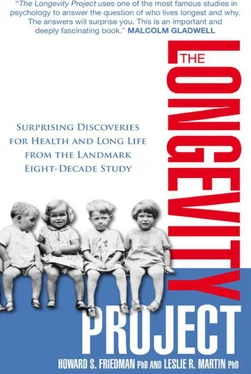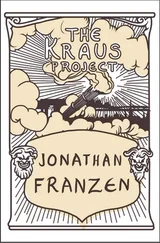Over a year, you will spend about 360 hours doing this, and during 40 years (say, from age twenty-one to age sixty-one), you will spend about 14,400 hours. Assuming that most of us are awake for about 16 hours a day, this means that you would be spending the equivalent of about 900 days jogging. This is about two and a half years spent exercising.
How much longer would such an active person live? How many extra days of life would this diligent jogger gain in which to pursue other well-loved hobbies? We do not know for sure, but anything that increased average longevity by more than two and a half years in a generally healthy adult population would be considered a very large effect—a striking phenomenon. So, with two and a half years spent on the pavement, there is not likely to be much of a net gain in available time for our poor jogger. Anyone who exercised even more would gain even less, winding up with a net loss of time.
But it gets even worse. Note that in this contrived example, the unhappy jogger is trading away thousands of hours of youth for perhaps a few extra years in old age. Many individuals would not choose that trade-off. They would prefer to have their leisure time when they are young and healthy. As Neil Armstrong put it, “I believe that the Good Lord gave us a finite number of heartbeats and I’m damned if I’m going to use up mine running up and down a street.” 47 47 Neil Armstrong made this comment in an interview with news anchor Walter Cronkite, included in L. Eisenberg’s Fifty Who Made the Difference: A Celebration of Fifty American Originals (New York: Random House, 1984).
Armstrong did not mind the rigorous astronaut training, but there was no way anyone was going to make him go on endless jogs.
Of course the real picture is somewhat more complicated. The jogger might really enjoy jogging and so might consider the time well spent. Or the jogger might be warding off a diagnosed tendency toward a debilitating chronic disease such as diabetes. Still, for many reasonably healthy and active individuals who are out running every morning because some advice list or some friend is pressuring them to try to improve their health, the results are not necessarily going to be what they expect. Some might have better uses for all that time, and others will be harmed by running injuries or even sudden death from cardiac arrest. This is probably why Ancel Keys spent many years doing the active gardening that he so enjoyed.
The Terman participants didn’t know about running shoes, treadmills, or marathons. Few people did regular jogging or serious running before the 1960s. The Nike company didn’t even exist in 1960. The Boston Marathon, the world’s oldest ongoing annual marathon, had fewer than three hundred runners until 1964 (when the average Terman subject was fifty-four years old). Women could not enter the Boston Marathon until 1972 (a time when the average Terman subject was in or approaching retirement). Nowadays the Boston Marathon is usually limited to about twenty thousand runners.
From a public health point of view, it’s great that so many people these days like to engage in socially hyped challenges like marathons. But it is important to recognize that these are recent social phenomena, and that many Terman participants remained steadily active in a healthy way having never even heard of a jogging trail or a spinning class.
SELF-ASSESSMENT: PHYSICAL ACTIVITY
People can be surprisingly inaccurate when asked to report how physically active they are—most tend to be positively biased, meaning that they believe they are more active than they really are. (People also tend to underestimate the number of calories they consume per day and report being a little taller and a little lighter than they actually are.) But a checklist works as a fairly realistic activity tracker.
Being as thoughtful and honest as you can, first circle each activity that you have done in the last week. Then, as accurately as you can, write the number of hours (in the last week) you spent doing the circled activities, in the blank space provided next to each.
Jogging (10-minute mile) _____
Walking moderately (3–4 mph) _____
Vacuuming _____
Swimming moderately _____
Mowing the lawn _____
Doubles tennis _____
Bicycling moderately _____
Swimming slowly _____
Moderate hiking _____
Bicycling leisurely _____
Working at the computer _____
Dog walking _____
Walking slowly (2 mph) _____
Playing a musical instrument _____
Sitting _____
Here’s how to assign some approximate MET values to these activities, on a per hour basis. Jogging a 10-minute mile = 10; swimming moderately = 7; bicycling moderately = 5.5; bicycling leisurely = 3.5; walking slowly = 2.5; walking moderately = 4; mowing the lawn = 4.5; swimming slowly = 4.5; working at the computer = 2; playing a musical instrument= 2.5; vacuuming = 3.5; playing doubles tennis = 4.5; moderate hiking = 8; dog walking = 3; sitting = 1.
There are certainly activities that you have done in the past week that are not on this list. You can use the MET assignments we have listed here to estimate how many METs your other activities are worth. Assign those numbers accordingly, in an analogous fashion. Don’t add in those single METs for the times when you’re sleeping. Once you have done that, use the METs per hour and the total amount of time you did various activities to calculate your total METs for each activity. For example, if you walked moderately for thirty minutes every day you would have written 3.5 hours per week. Walking moderately fast is 4 METs per hour, so this would give you a total of 14 METs per week just for this one activity. Add up all the activities’ totals for the week.
These METs are not tailored to an individual’s level of fitness. Although walking at a pace of 3 to 4 miles per hour requires much more effort for an eighty-five-year-old grandma than it does for an eighteen-year-old member of a competitive water polo team, both the water polo competitor and the grandma will receive 4 METs. Thus, someone who is very fit will tend to overestimate his or her energy expenditure and someone who is very unfit will tend to underestimate when using this sort of a general calculation. Nonetheless, it is a useful way to quantify your approximate level of physical activity, and it is much more accurate than simply thinking, “Hmm… how active am I? I think I’m pretty active.”
Obviously different groups of people will expend different levels of energy and so samples can be expected to vary quite a bit depending on who is included. So how do you evaluate your activity level? In one large stratified sample (meaning, chosen to be representative of the larger population) of more than fifteen thousand Europeans, the highest 20 percent expended about 250 METs or more per week while the lowest 20 percent expended less than 122 METs. 48 48 To read more about METs and differences among groups, see M. A. Martinez-Gonzalez, J. A. Martinez, F. B. Hu, M. J. Gibney, and J. Kearney, “Physical Activity, Sedentary Lifestyle and Obesity in the European Union,” International Journal of Obesity and Related Metabolic Disorders 23 (1999): 1192-1201.
Marathonlessness Is Not a Disease
If a person feels good and is a productive worker but dislikes sports and active outdoor hobbies, is that person unhealthy? One of the problems with society’s overemphasis on medical diagnosis and treatment is an overclassification of illness—that is, calling too many people “sick.” This peculiar problem usually arises by way of a large study finding that, on average, risk of disease or premature mortality falls with increasing exercise, lower weight, or lower blood pressure. Then some medical board sets some cutoff for abnormality—supposedly the first sign of disease. For example, a body mass index (a ratio of weight to height) that is over 30 would label you as obese.
Читать дальше











